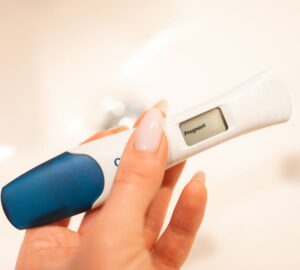As we age, our good cholesterol (High-density lipoprotein) tends to decline more than ideal, and our bad cholesterol (low-density lipoprotein) increases. When LDL increases, the risk of heart attacks and cardiovascular diseases increases, as well.
Fortunately, there are several lifestyle changes that you can make, which can improve your cholesterol levels. But if these changes aren’t enough, there are also cholesterol-lowering medications available for you to take.
Lifestyle Changes
The following tips can help you lower your cholesterol levels and boost the power of the medications.
Eat Smart
The American Heart Association (AHA) recommends limiting processed and red meat, sodium, fried foods, full-fat dairy, and added sugar in your diet. As an alternative, focus on poultry, produce, fish, whole grains, and healthy oils.
Regular Exercise
Regular cardio exercises, such as running and burpees, can help boost good cholesterol and cut down triglycerides levels. Additionally, according to a scientific statement made by the AHA, strength training can lower bad cholesterol.
Keep A Healthy Weight
Being overweight or obese can reduce HDL and raise LDL. According to a study, overweight women who lost at least 10% of their body weight saw their bad cholesterol decline by ten points, and overweight men saw their LDL drop by about five points.
Find ways to add more physical activities into your everyday routine. For example, instead of taking the elevator, use the stairs. What’s more, it’s a good idea to take walks in your free time.
Stop Smoking
According to research, smoking can increase LDL levels by 2.2 points. That said, you should think about quitting now. By doing so, your HDL levels will improve quickly. In fact, within the first 20 minutes of quitting, your heart rate and blood pressure recuperate.
Within three months, your lung function and blood circulation will start to improve. And lastly, within a year of quitting, the risk of heart diseases will lower at least 50% than that of a smoker.
Ideal Cholesterol Levels
For all adults, the ideal cholesterol levels are the same. Meaning:
- Normal triglycerides level is less than 150 mg per dL.
- Normal HDL cholesterol is at least 60 mg per dL for men and women.
- Normal LDL cholesterol is less than 100 mg per dL.
- Normal total cholesterol is anywhere between 125 to 200 mg per dL.
The AHA advises that healthy adults should have their cholesterol levels examined every 4 to 6 years. However, if you have cardiovascular disease or your results are borderline, get screened more frequently.
When To Consider A Statin
Statins are widely prescribed and the most common cholesterol-lowering medications. These medications work by obstructing the enzymes in your body responsible for restricting cholesterol uptake.
Statins include:
- Simvastatin
- Rosuvastatin calcium
- Pravastatin
- Pitavastatin
- Lovastatin
- Fluvastatin
- Atorvastatin
Also, statins have numerous effects throughout the body, including stabilizing the plaques in the arteries and lowering inflammation. Statins are typically used first, and if your LDL levels remain high, other medications are added.
AHA recommends statins for:
Adults with type II diabetes: The AHA and American College of Cardiology (ACC) advise those between ages 40 and 75 to take moderate-intensity doses of statins, such as Simvastatin, Pravastatin, Rosuvastatin, and Atorvastatin. High-dosage Rosuvastatin or Atorvastatin is for cholesterol higher than 240 mg or those with multiple risk factors for cardiovascular disease.
Adults with a past heart attack or stroke: If you have had a stroke or heart attack or are living with a coronary condition, the ideal LDL is below 70.
Adults ages 40 to 70 with an LDL level of at least 190: The AHA-ACC advises the highest dose of statin you can tolerate.
Statin Side Effects
The common side effects of statin include muscle inflammation, liver damage (uncommon), nausea, cramps, diarrhea, and intestinal problems. What’s more, type II diabetes and high blood sugar might be more likely with this medication. However, the risk is about 1:250.
According to the FDA, the benefits of taking statin surpass the risks. In addition, statin medications might interact with other drugs you take. So, your doctor should assess that first.
Moreover, some people have reported confusion and memory loss associated with their statin intake. However, the FDA is verifying these reports and states that, in general, the side effects were not severe and were gone within several weeks after the particular person stopped taking the medication.
Lastly, you must avoid grapefruit and grapefruit juice when you take statins because it makes it difficult for your body to process these medicines.
Takeaway
There are a lot of factors that contribute to high cholesterol levels. For one, your lifestyle choices can have a significant influence on your body’s ability to successfully remove LDL from the blood and have a huge effect on your dietary cholesterol levels. Aside from that, an inactive and passive lifestyle can raise your risk for CVD. Additionally, your cholesterol levels can be partly determined by your genetics through a condition called familial hypercholesterolemia.




